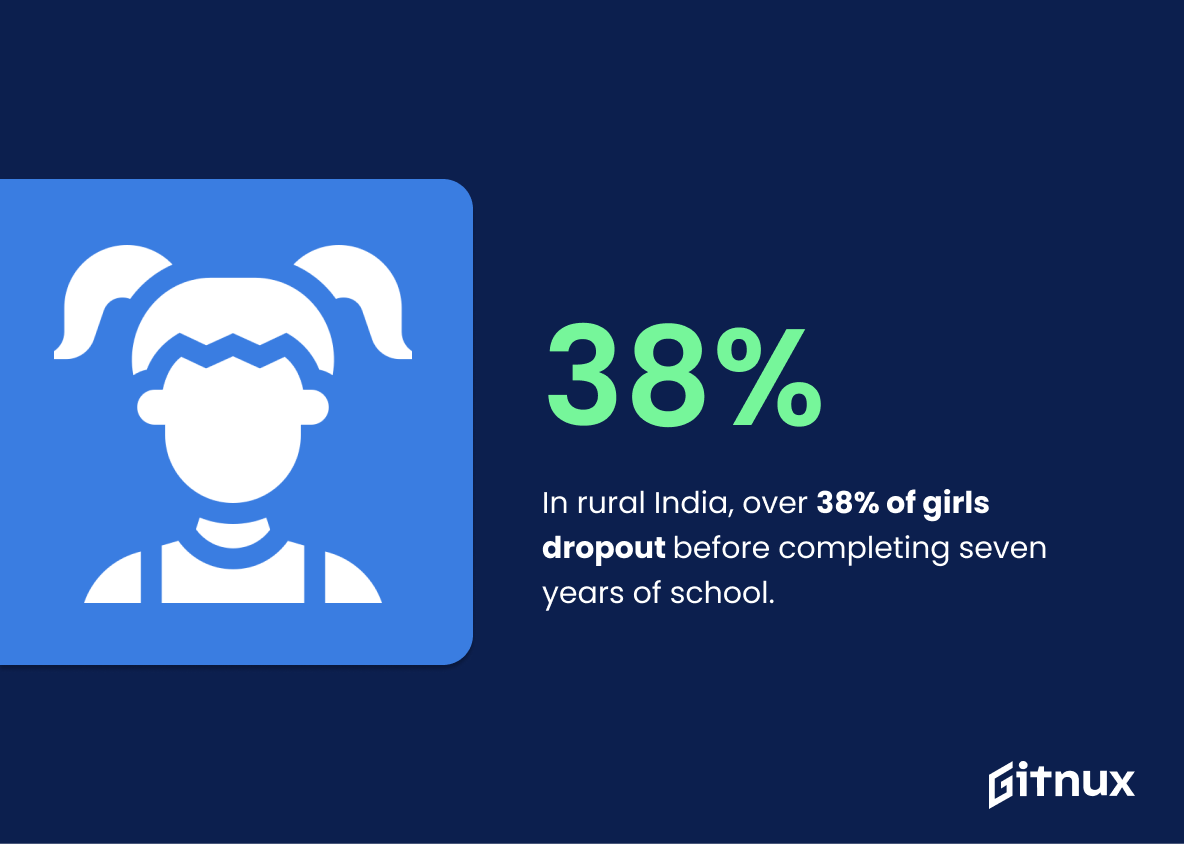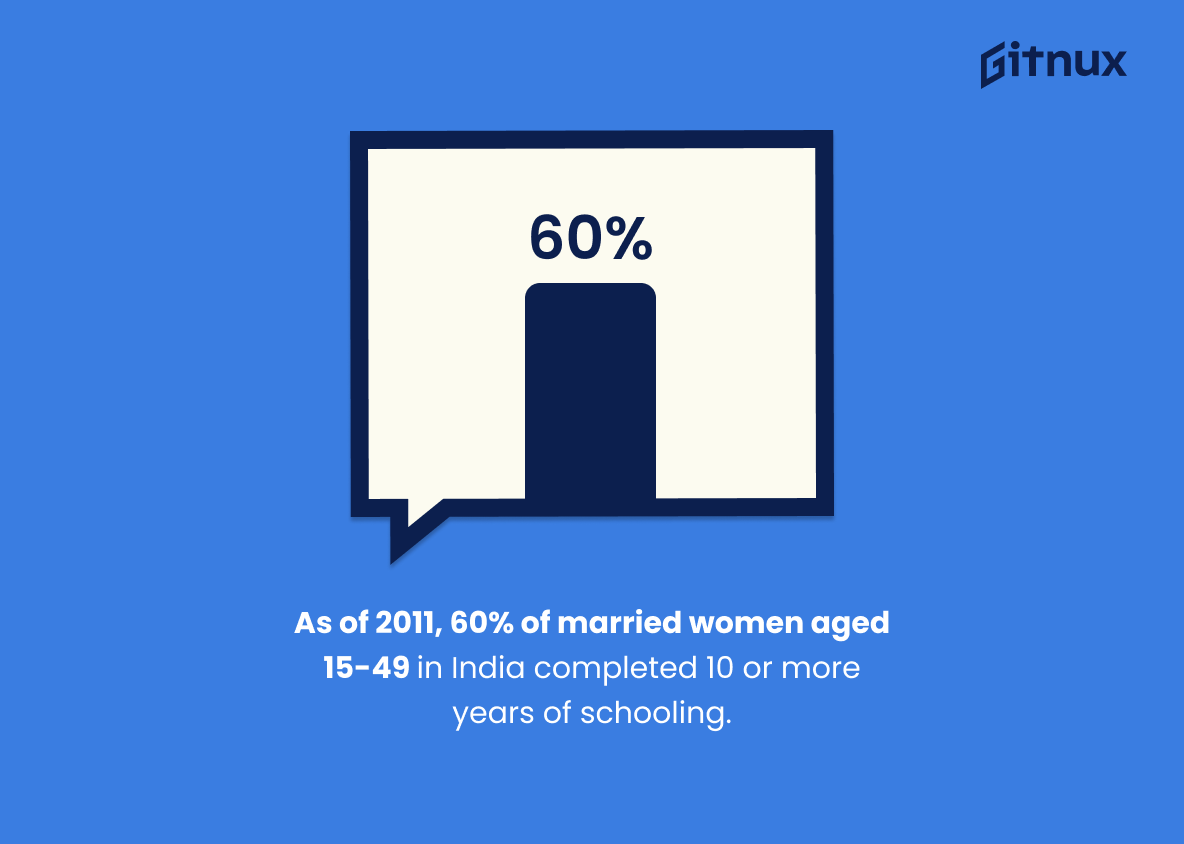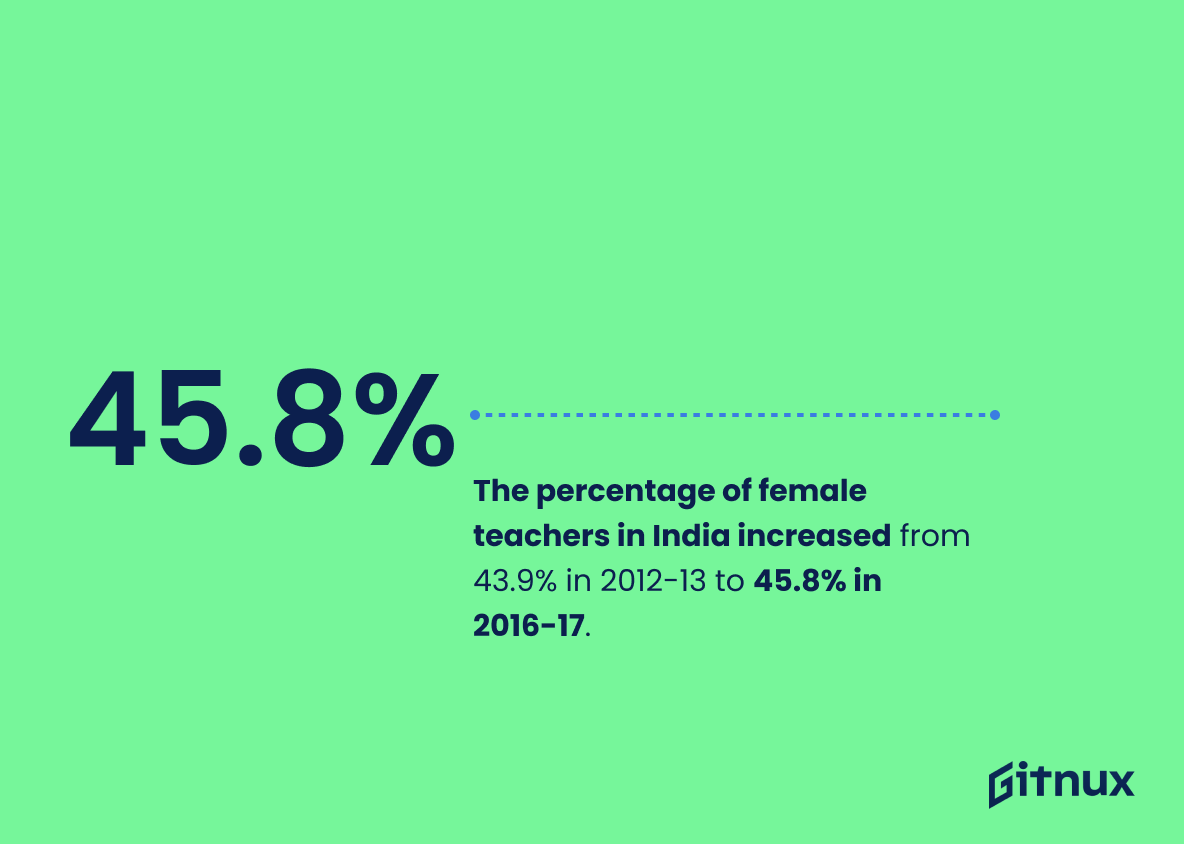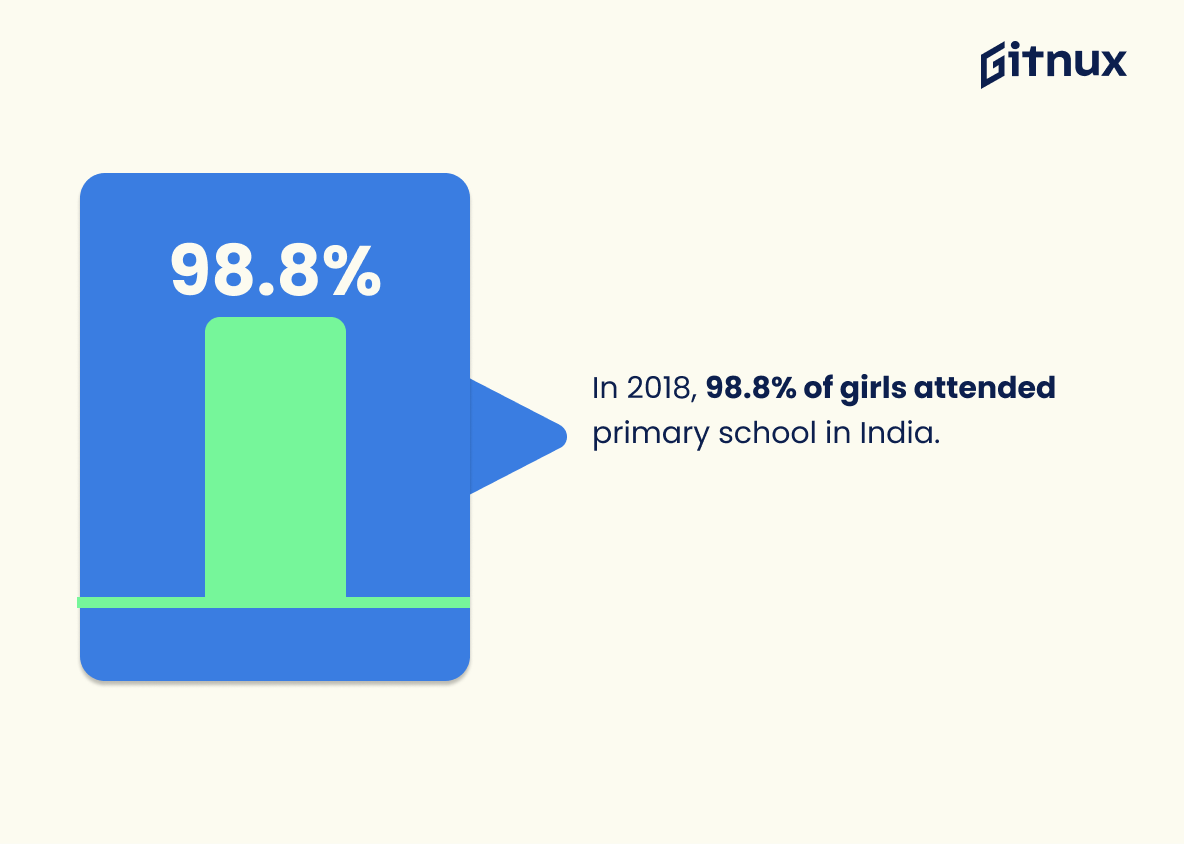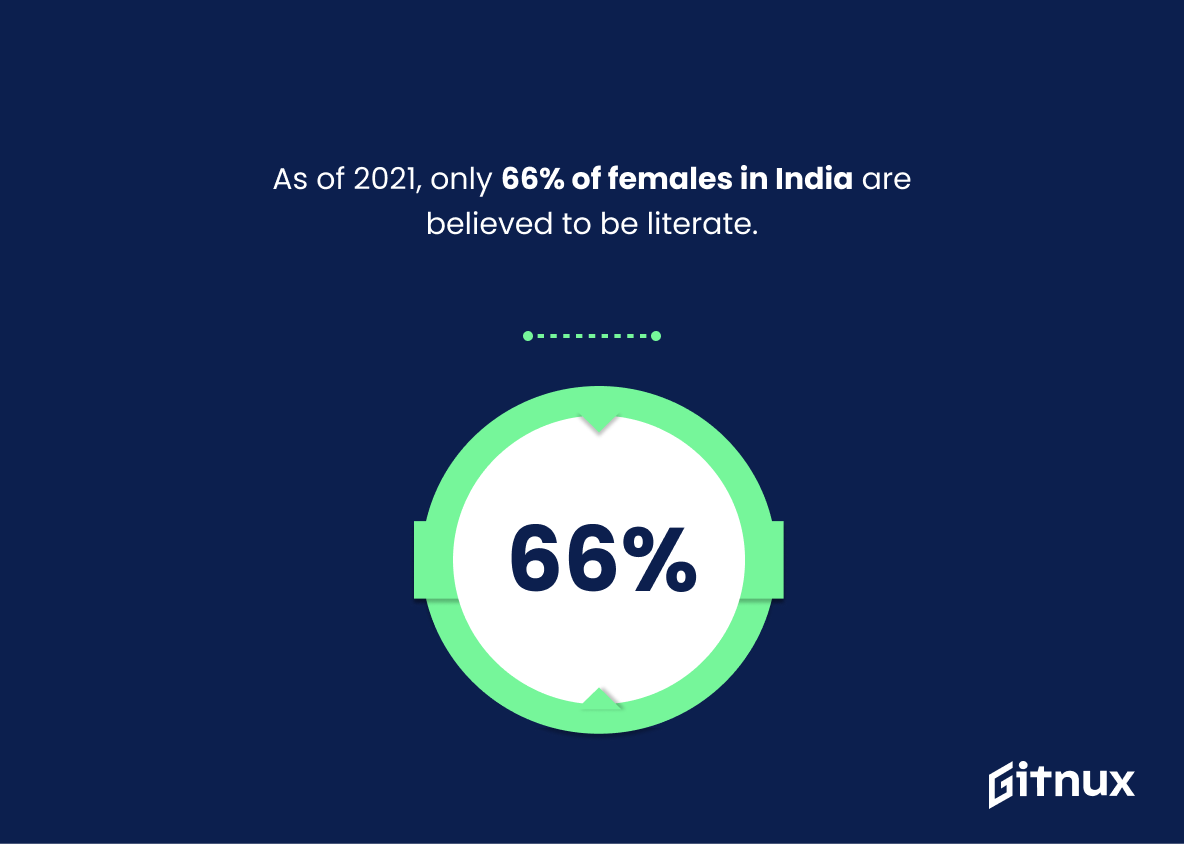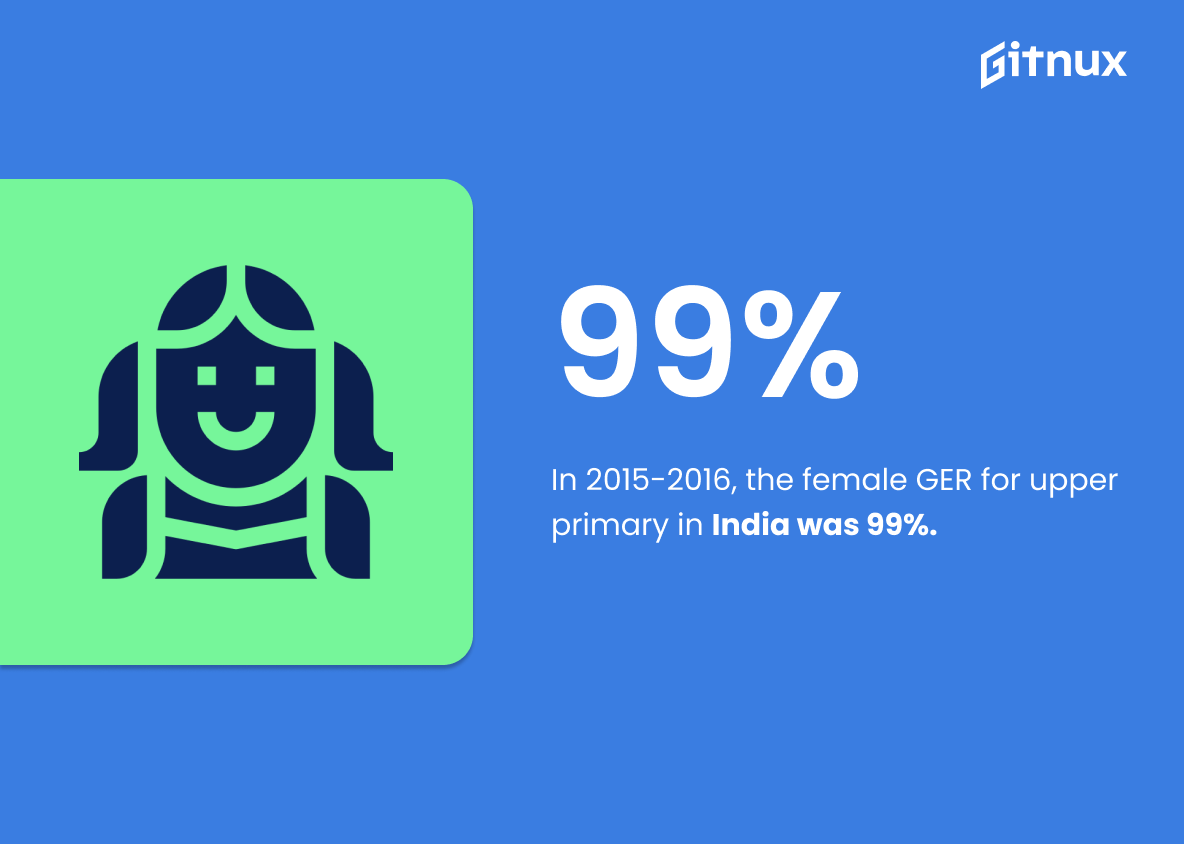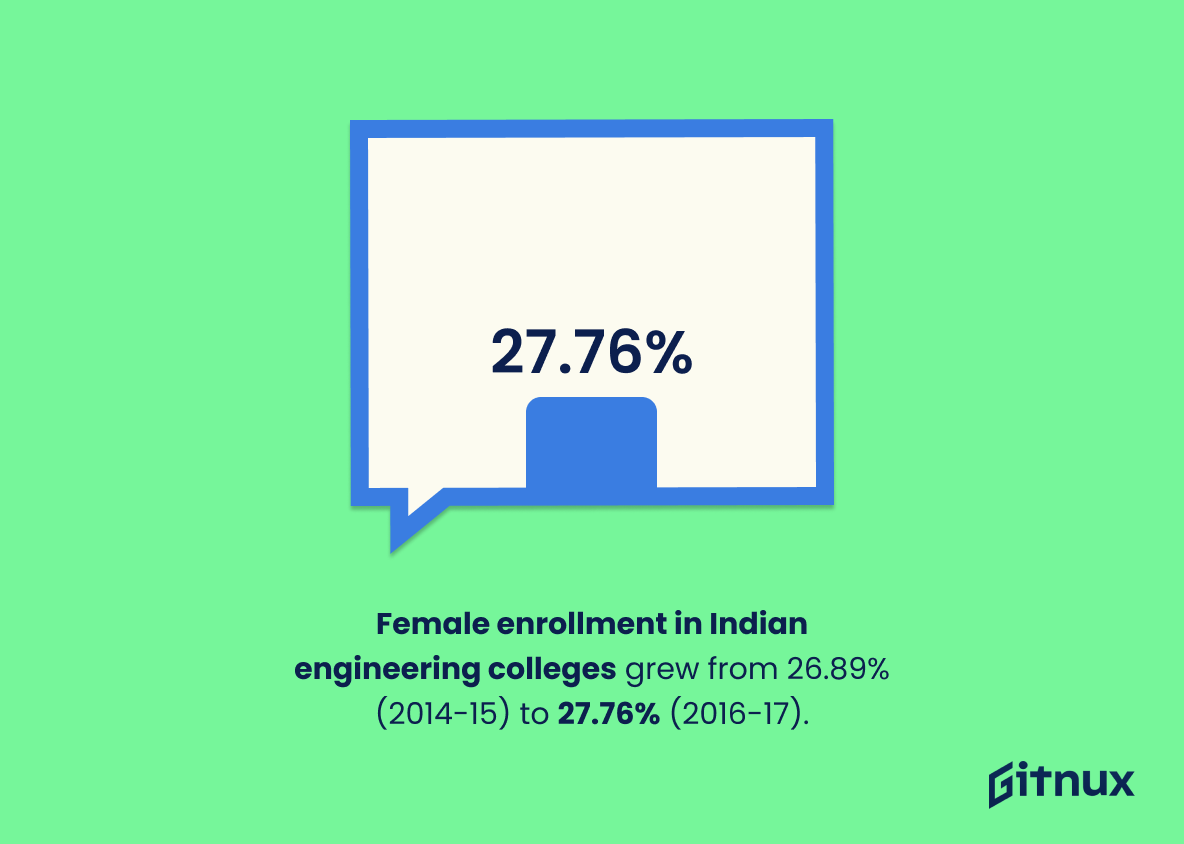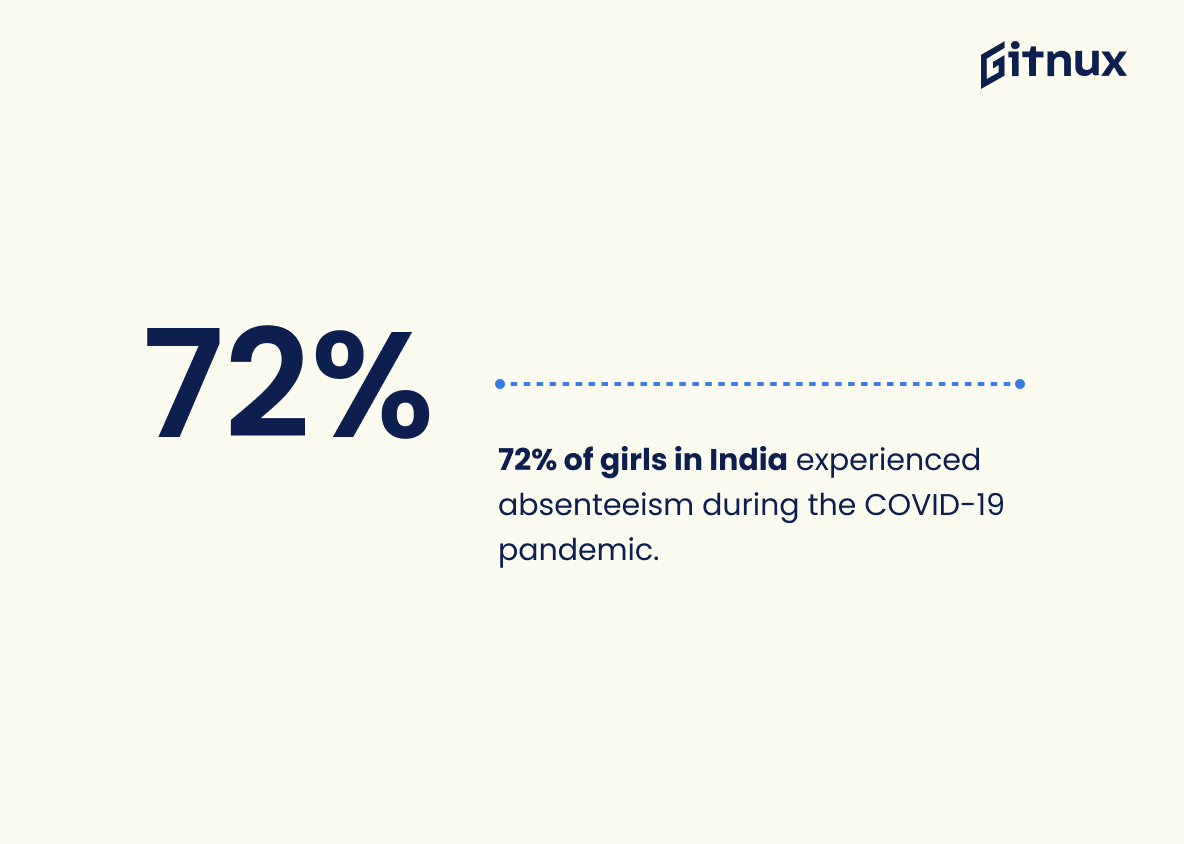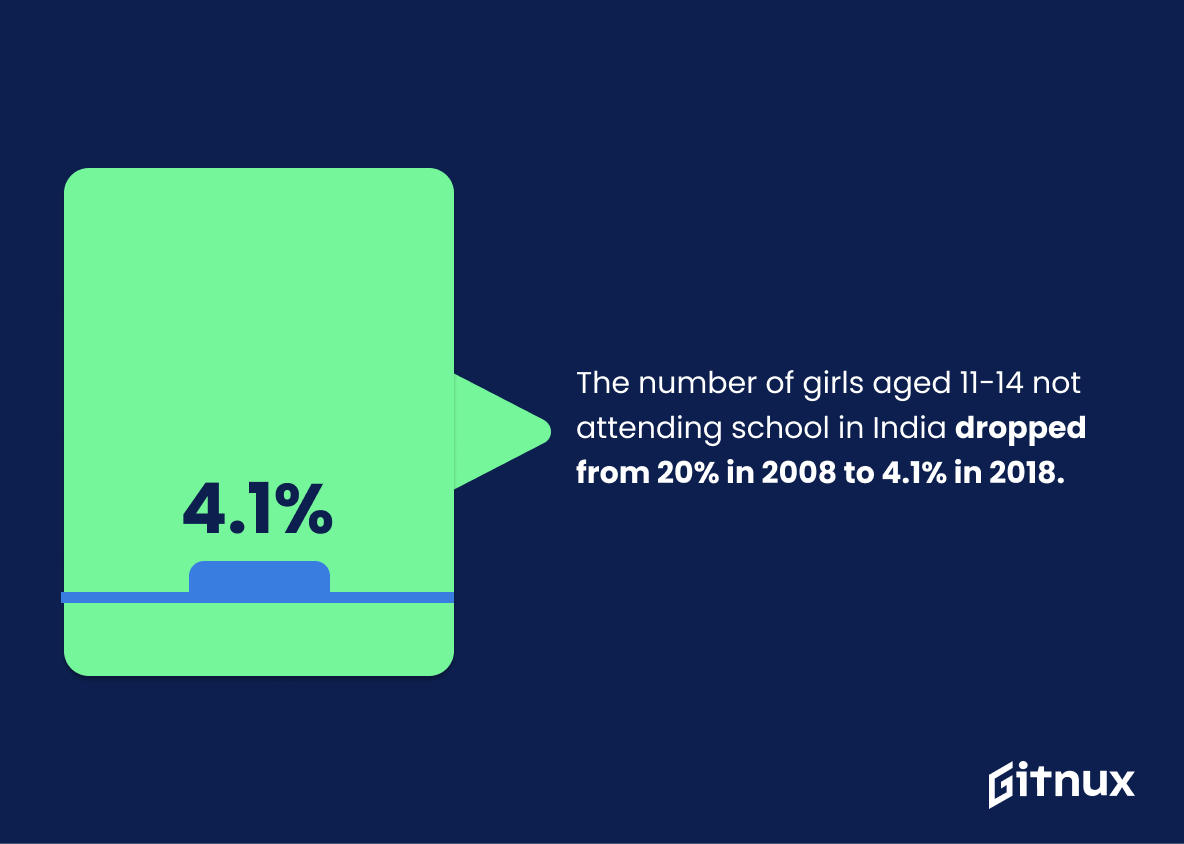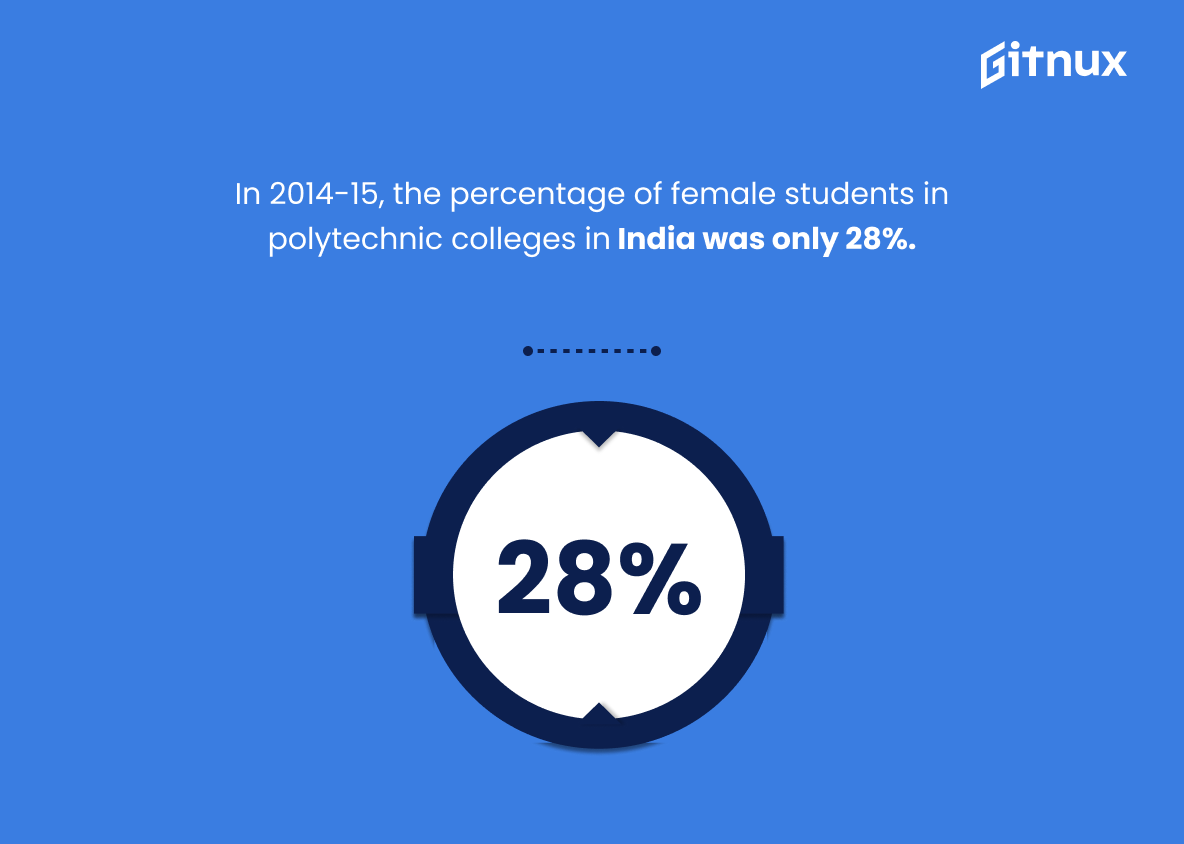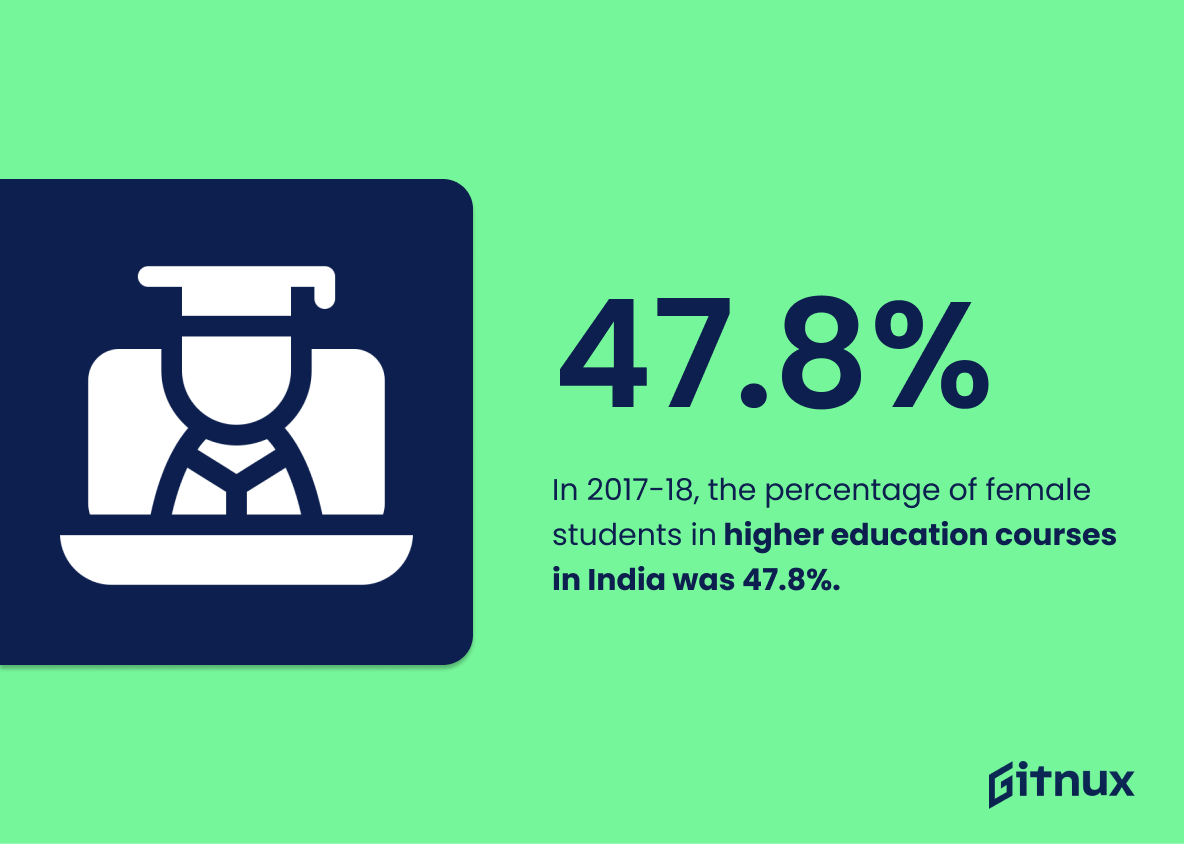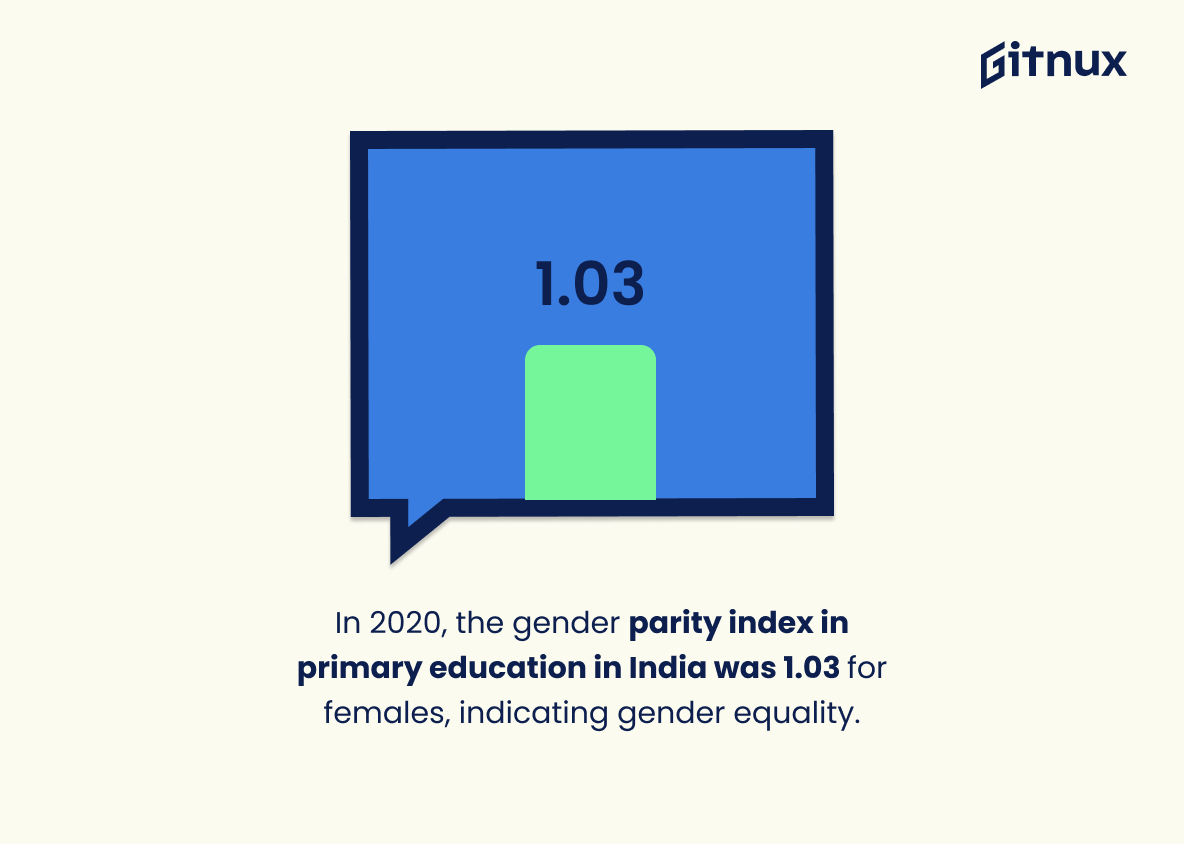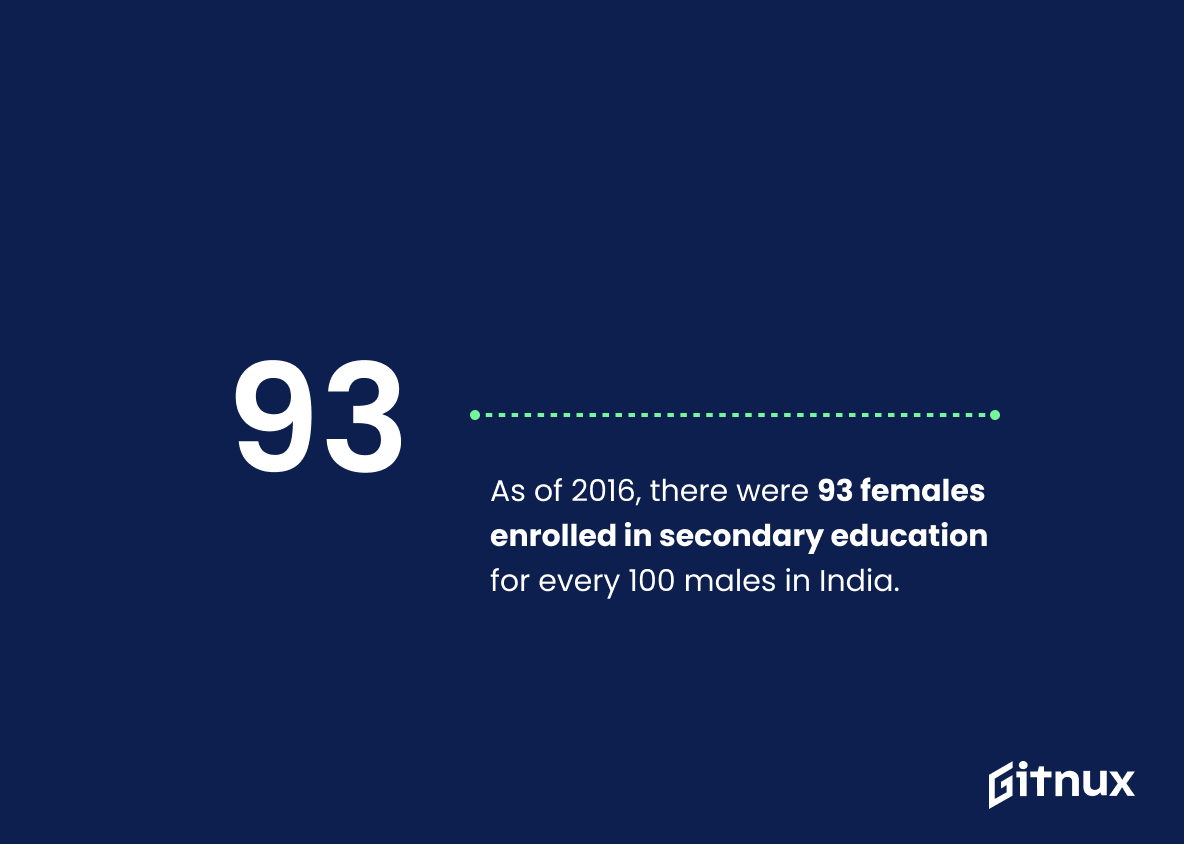Female education in India has come a long way since the country’s independence. Despite this progress, there is still much work to be done to ensure that all girls have access to quality education and are able to reach their full potential. In this blog post, we will explore some of the key statistics related to female education in India. We will look at literacy rates for women compared with men, enrollment ratios for elementary and higher levels of schooling, dropout rates among rural girls, average years of schooling completed by married women aged 15-49 as well as gender parity indices across different educational stages. Finally, we will also examine data on child labor participation among females aged 5-14 years old and earnings disparities between genders in India.
This statistic is a testament to the progress India has made in providing equal access to education for girls in elementary school. It is a powerful indicator of the commitment to female education in India, and serves as a reminder of the importance of continuing to invest in and prioritize girls’ education.
Female enrollment in higher education has increased from 39% in 2006-07 to 48.6% in 2018-19.
This statistic is a testament to the progress that has been made in female education in India. It shows that more and more women are taking advantage of the opportunities available to them and are enrolling in higher education. This is an encouraging sign that more women are becoming empowered and are taking steps to improve their lives and the lives of their families. This statistic is a reminder that female education is an important issue that needs to be addressed in India and that progress is being made.
Female Education In India Statistics Overview
In rural India, over 38% of girls dropout before completing seven years of school.
This statistic is a stark reminder of the reality of female education in India. It highlights the fact that despite efforts to improve access to education, many girls in rural India are still unable to complete their schooling. This statistic is a call to action to ensure that girls in rural India have the same access to education as their peers in urban areas.
As of 2011, 60% of married women aged 15-49 in India completed 10 or more years of schooling.
This statistic is a powerful indicator of the progress India has made in terms of female education. It shows that a majority of married women in India have achieved a level of education that is higher than the minimum required for most jobs. This is a testament to the efforts of the Indian government and other organizations to promote female education in the country. It also serves as a reminder that there is still much work to be done in order to ensure that all women in India have access to quality education.
The percentage of female teachers in India increased from 43.9% in 2012-13 to 45.8% in 2016-17.
This statistic is a testament to the progress being made in India towards achieving gender equality in the education sector. It shows that more and more women are being given the opportunity to teach, which is a crucial step in ensuring that girls receive the same quality of education as boys. This statistic is a positive sign that India is taking steps to ensure that female education is given the same importance as male education.
In 2018, 98.8% of girls attended primary school in India.
This statistic is a testament to the progress India has made in providing educational opportunities to its female population. It highlights the importance of female education in India and the commitment of the government to ensure that girls have access to primary education. It also serves as a reminder of the need to continue to strive for gender equality in education and to ensure that girls have access to quality education.
As of 2021, only 66% of females in India are believed to be literate.
This statistic serves as a stark reminder of the gender gap in literacy rates in India. It highlights the need for greater investment in female education in India, as well as the need for more effective policies and initiatives to ensure that all women have access to quality education. It is a call to action to bridge the gap between male and female literacy rates in India.
At the upper primary level, the female Gross Enrolment Ratio (GER) in India was 99% in the year 2015-2016.
This statistic is a testament to the progress India has made in providing educational opportunities to its female population. It shows that the country is making strides towards achieving gender parity in education, and that the efforts to promote female education are paying off. This statistic is a powerful reminder that India is on the right track when it comes to providing equal access to education for all its citizens, regardless of gender.
The percentage of females in engineering colleges in India increased from 26.89% in 2014-15 to 27.76% in 2016-17.
This statistic is a testament to the progress being made in India towards achieving gender equality in education. It shows that more and more women are taking up engineering courses, which is a positive sign for the future of female education in India. This statistic is a reminder that, with the right support and encouragement, women can achieve great things in the field of engineering and other STEM-related fields.
72% of girls in India experienced absenteeism during the COVID-19 pandemic.
This statistic is a stark reminder of the challenges that female education in India faces during the COVID-19 pandemic. It highlights the fact that the pandemic has had a disproportionate impact on girls, with 72% of them experiencing absenteeism. This is a concerning figure that should be addressed in order to ensure that girls in India have access to the same educational opportunities as their male counterparts.
The number of girls aged 11-14 not attending school in India dropped from 20% in 2008 to 4.1% in 2018.
This statistic is a testament to the progress India has made in providing educational opportunities to girls aged 11-14. It shows that the country has made significant strides in closing the gender gap in education, and that more girls are now able to access the educational resources they need to succeed. This is an encouraging sign for the future of female education in India, and a reminder of the importance of continuing to invest in and prioritize girls’ education.
In 2014-15, the percentage of female students in polytechnic colleges in India was only 28%.
This statistic serves as a stark reminder of the gender gap in education in India. It highlights the need for greater efforts to be made to ensure that female students have access to the same educational opportunities as their male counterparts. It also serves as a call to action for those in positions of power to take steps to bridge this gap and ensure that female students are given the same opportunities to pursue higher education.
In 2017-18, the percentage of female students in higher education courses in India was 47.8%.
This statistic is a powerful indicator of the progress made in female education in India. It shows that despite the challenges that women face in accessing higher education, there has been a steady increase in the number of female students enrolled in higher education courses. This statistic is a testament to the hard work and dedication of the Indian government and educational institutions in promoting gender equality in education. It also serves as a reminder that there is still much work to be done in order to ensure that all women in India have access to quality education.
In 2020, the gender parity index in primary education in India was 1.03 for females, indicating gender equality.
This statistic is a powerful testament to the progress India has made in achieving gender equality in primary education. It shows that the country is making strides towards providing equal access to education for both genders, which is essential for the development of a strong and equitable society. This statistic is a reminder of the importance of continuing to invest in female education in India, and of the need to ensure that all children, regardless of gender, have access to quality education.
As of 2016, there were 93 females enrolled in secondary education for every 100 males in India.
This statistic is a powerful indicator of the progress India has made in providing equal access to education for both genders. It shows that the country is making strides towards closing the gender gap in education, which is essential for the development of a more equitable society. This statistic is also important in understanding the current state of female education in India, and can be used to inform policy decisions and initiatives to further improve access to education for women.
In 2013, there was a gender gap of 47 percentage points in the average annual earnings of women and men in India.
This statistic serves as a stark reminder of the gender inequality that persists in India, particularly in terms of economic opportunities. It highlights the need for greater investment in female education, as it is clear that women are not receiving the same opportunities as men in the workforce. This statistic is a call to action for those who are passionate about improving the lives of women in India, and it serves as a reminder that there is still much work to be done.
Conclusion
The statistics presented in this blog post demonstrate that female education in India has made significant progress over the years. The literacy rate for women is steadily increasing, and enrollment rates at all levels of education have improved significantly since 2006-07. However, there are still some areas where gender disparities remain a challenge – such as child labor and earnings gaps between men and women. To ensure equal access to quality education for girls across India, it is essential to address these issues through targeted policies and initiatives aimed at eliminating existing barriers to female educational attainment.
References
0. – https://www.savethechildren.in
1. – https://www.thebetterindia.com
2. – https://www.indiatoday.in
3. – https://www.indiaspend.com
4. – https://www.educationworld.in
5. – https://www.niepa.ac.in
6. – https://www.borgenmagazine.com
7. – https://www.unstats.un.org
8. – https://www.data.unicef.org
9. – https://www.data.worldbank.org
10. – https://www.macrotrends.net
11. – https://www.nobelprize.org
12. – https://www.timesofindia.indiatimes.com
